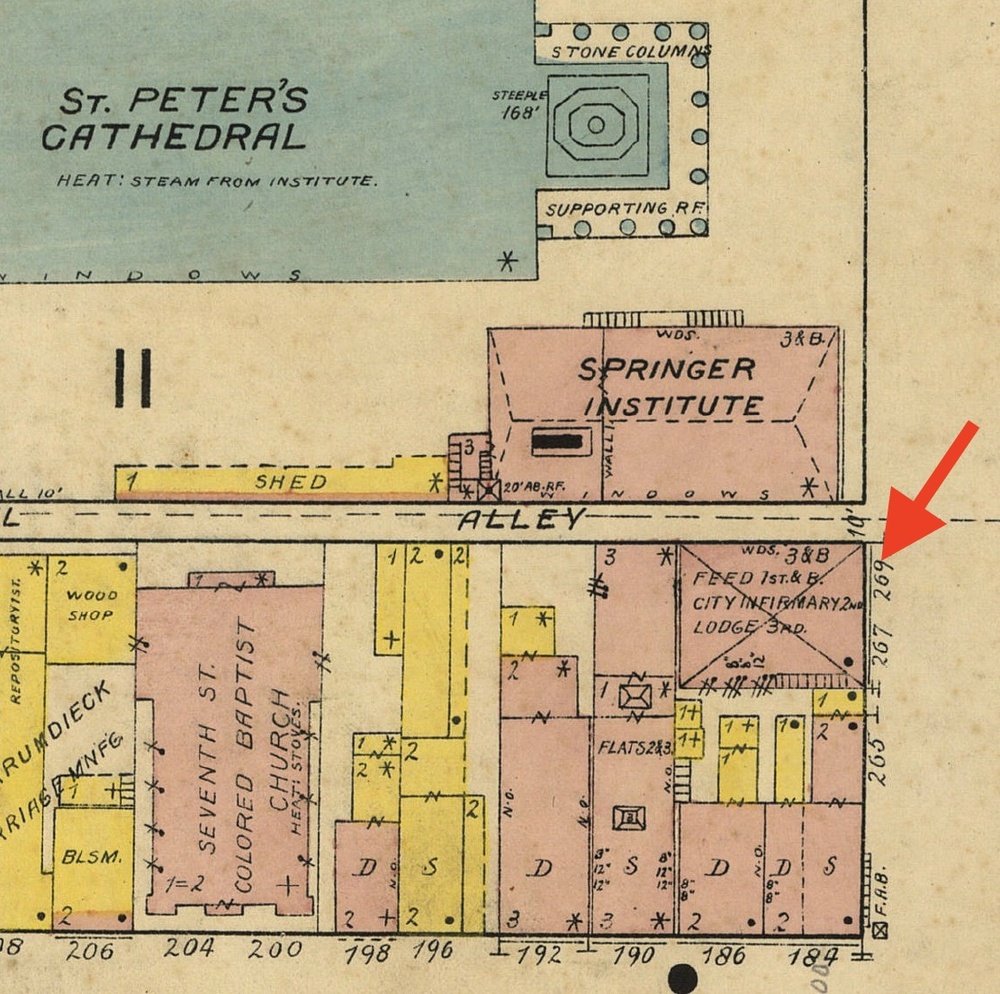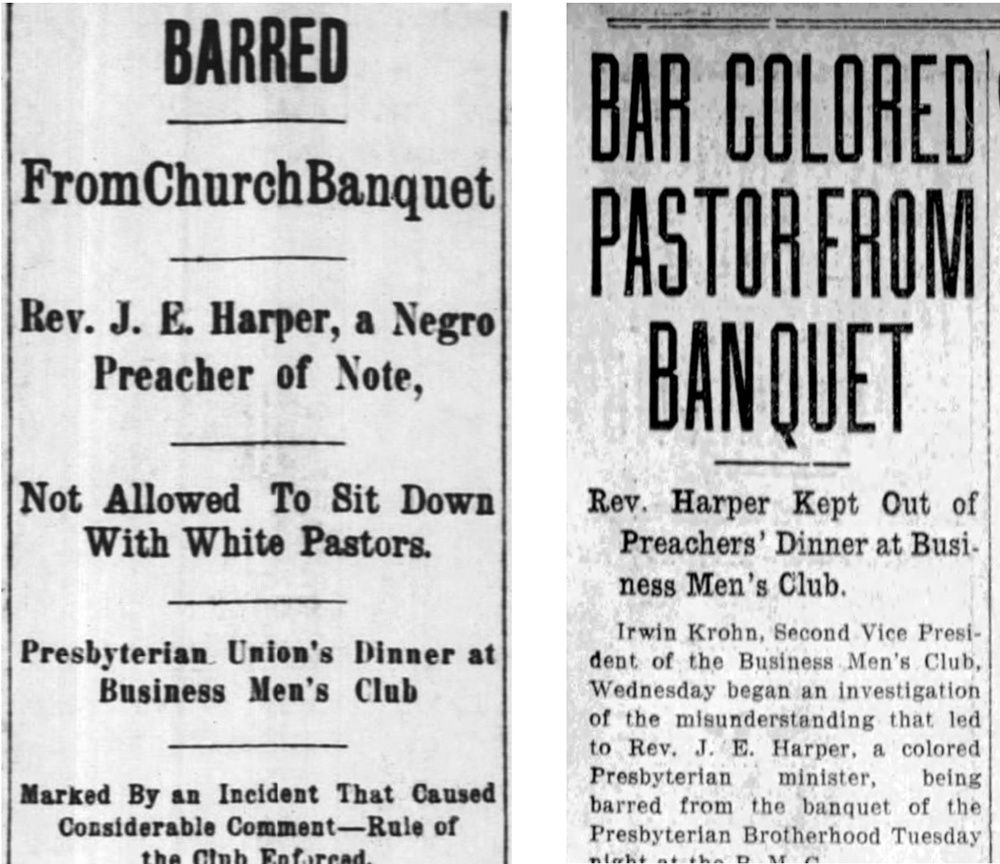Site of the earliest Black Presbyterian Congregation in Ohio
Reverend James E. Harper and the founding of Carmel Presbyterian Church

In 1901, Reverend James E. Harper founded Carmel Presbyterian Church in a rented hall in downtown Cincinnati. The congregation still exists, today meeting in a historic building in Avondale. Harper served at Carmel until 1909, despite facing virulent racism from within his own denomination.
James E. Harper was born in South Carolina in 1878. At the age of twenty, he received a degree in theology from Lincoln University in Pennsylvania. He then moved to Cincinnati and became head of a Presbyterian mission in a building called Lime Hall, at 707 Plum Street.
The building at 707 Plum had a feed store on the ground floor and a city infirmary on the second. The third-floor meeting hall had been used for African American lectures and political meetings since the 1870’s. Reverend Harper organized his congregation there in September 1901. The next month, the Presbyterian Synod of Ohio convened in Dayton. The Dayton Daily News reported,
“Rev. Mr. Harper, pastor of the First Colored Presbyterian church of Cincinnati, the first colored church of the denomination in Ohio, was introduced and spoke hopefully of the work.”
In 1906, Harper got a fresh lesson, as if he needed one, in how deep the color line ran. The Presbyterian Union sponsored a Presbyterian Brotherhood banquet at Cincinnati’s Business Men’s Club. The dinner took place on October 16, with nearly 500 guests in attendance.
Reverend Harper had purchased a ticket, but when he arrived in the vestibule, he was asked to “wait a minute.” After a delay, Reverend Robert Watson of the Second Presbyterian Church came out of the dining room and told Harper that the rules of the Business Men’s Club forbade entry by African Americans. Watson expressed regret that Rev. Harper would not be allowed to attend.
Newspapers picked up the story. One white minister described Harper as “a brilliant man of many intellectual attainments … a polished and deep theologian, a member of the Cincinnati Presbytery and the Presbyterian Brotherhood” whose expulsion was “an insult to the Brotherhood.” But there seems to have been no official apology, so Harper swallowed his pride and moved on.
Over the years of Harper’s tenure as pastor of Carmel, his congregation moved from temporary home to temporary home without ever raising enough money to build a sanctuary. At a meeting of the Cincinnati Presbytery in 1909, some minsters suggested that Carmel needed more help. Then a minister named George D. McCullough rose to speak:
“I do not believe in pouring money down a rat-hole. In our experience as Presbyterians, nothing has given as little satisfaction as our work among the colored people. I do not say this because I am an enemy of the colored people. My father was an abolitionist and I inherited his feelings on the subject, but I have lived in other cities where the Presbyterian work among the colored people as far as establishing churches for them is concerned was a flat failure… . Therefore, I would not vote to spend another dollar for a permanent church for the colored folk.”
McCullough closed by saying, “There are Baptist and Methodist colored churches, so that we need not fear for the salvation four their souls.”
Harper was fired. But Carmel Presbyterian Church survived him. And a few years later, he was offered a plum assignment in Brooklyn, New York: pastorate of the Siloam Presbyterian Church. Founded in 1849, Siloam was famous as an Underground Railroad church and, subsequently, a powerhouse of activism.
Harper was pastor of the Siloam Church until 1919. He was later called to the pulpit of the Calvary Presbyterian Church in Asbury Park, New Jersey, where he served until his death in 1951, at the age of 73.
Images

